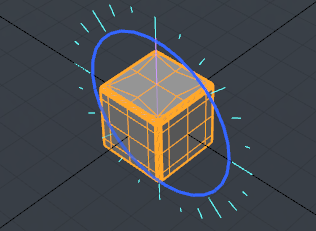


By classification approaches, the latter study also revealed compositional heterogeneity of the translocon while TRAP is a stoichiometric component of the ribosome-bound translocon complex, OST was found to be present in only 40–70% of translocon complexes. CET provided first insights into the structure of the native translocon 11 and further studies based on isolated rough ER (rER) vesicles from canine and human origin allowed identification of Sec61, the translocon associated protein complex (TRAP) and the oligosaccharyl-transferase (OST) complex in a map of the native translocon at 20 Å resolution 12. It is particularly attractive for studying membrane-embedded and -associated complexes, because detergent solubilization is not required, avoiding destabilization of the complex and possible misinterpretation of the density of the detergent micelle surrounding a solubilized membrane protein. Thus, the structure of Sec61 in its native context remains uncharted territory.Ĭryo-electron tomography (CET) in combination with subtomogram analysis is an excellent method for studying the structures of large macromolecules in their natural environment 9, 10. To date all structural studies that resolved conformations of Sec61 focused on the detergent-solubilized protein-conducting channel in the absence of all other translocon components. Recently, structures of the solubilized ribosome-Sec61 complex purified from porcine pancreas were determined for the two non-inserting conditions, revealing the binding moieties of Sec61 at unprecedented resolution (3.4 and 3.9 Å, respectively) 8. Specifically, two major conformations are thought to underlie the two fundamentally different functional states of Sec61: (I) in the ‘non-inserting state' (idle or translocating a soluble polypeptide chain), Sec61 is believed to adopt a compact conformation with a closed lateral gate (‘closed' conformation) (II) in the ‘inserting state' (integration of a TMH into the membrane), Sec61 is supposed to transiently adopt a less compact conformation with an open lateral gate (‘open' conformation). On the basis of these structures, a detailed model for protein translocation through a central pore and protein membrane insertion via a lateral gate, formed by two adjacent transmembrane helices (TMHs) of Sec61α, has been proposed 2, 6, 7. Single particle cryo-electron microscopy (EM) studies have provided high-resolution structures of solubilized and purified ribosome-Sec61/SecYEG complexes in defined functional states 5, 6, 7. The structure of the prokaryotic Sec61 homologue, the SecY complex, has been extensively studied by X-ray crystallography 2, 3, 4. The universally conserved heterotrimeric protein-conducting channel Sec61 forms the core of the translocon and binds to translating ribosomes for co-translational protein transport. These processes are facilitated by the translocon, a multi-subunit complex located in the ER membrane. In eukaryotic cells, many proteins have to be translocated across or inserted into the endoplasmic reticulum (ER) membrane during their synthesis 1. Consistent with earlier functional studies, our structure suggests that the ribosome alone, even without a nascent chain, is sufficient for lateral opening of Sec61 in a lipid environment. In contrast to recent mechanistic models for polypeptide translocation and insertion, our results indicate that the laterally open conformation of Sec61 is the only conformation present in the ribosome-bound translocon complex, independent of its functional state. Surprisingly, the 9-Å resolution subtomogram average reveals Sec61 in a laterally open conformation, even though the channel is not in the process of inserting membrane proteins into the lipid bilayer.

Here we structurally and functionally characterize native, non-solubilized ribosome-Sec61 complexes on rough ER vesicles using cryo-electron tomography and ribosome profiling. In mammalian cells, secretory and membrane proteins are translocated across or inserted into the endoplasmic reticulum (ER) membrane by the universally conserved protein-conducting channel Sec61, which has been structurally studied in isolated, detergent-solubilized states.


 0 kommentar(er)
0 kommentar(er)
